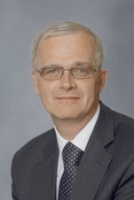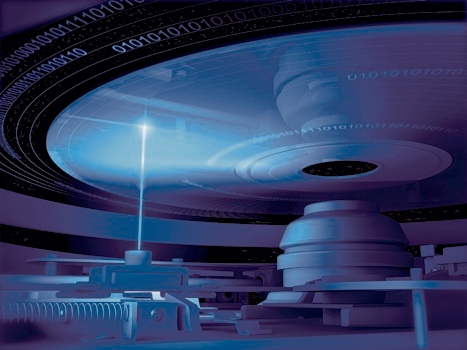
Turmoil in the economy and environmental upheaval: it’s an interesting time to head up an engineering institute. Christopher Snowden, taking on the presidency of the Institution of Engineering and Technology (IET) this year, takes the view that it’s an opportunity for engineers, both for technology and industry to take over from finance as the powerhouse of the economy, and to find solutions to energy conservation and climate change.
But this is the UK; a country where, many believe, engineering has been underappreciated, overlooked and discounted for years. How to restore technologists to their proper standing is something which Snowden, a microwave technology specialist and now vice-chancellor and chief executive of the University of Surrey, has high on the agenda for his year at the top of the IET.
It’s a familiar complaint that the UK is bad at exploiting its technological innovations, but Snowden doesn’t agree. ‘Just because you’ve come up with something, doesn’t necessarily mean that the best place to exploit it is in the same country,’ he said. ‘We’ve actually done a pretty good job of it; there are an awful lot of spin-offs companies originating from UK research. But for example, in my own university, we invented the quantum dot laser which is now used in CD and DVD players, but that had a lineage where Philips acquired the technology and brought it to the world. We shouldn’t feel bad because we don’t commercialise everything we discover, as long as we commercialise enough of it to keep our industry healthy.’
“A lot of my colleagues say that the exciting projects are all done now and that’s why engineering isn’t popular. It’s just not true.”
The IET is a relatively new organisation, formed in 2006 from the merger of the Institute of Electrical Engineers and the Institution of Incorporated Engineers. As such, it’s representing the interests of a far wider variety of engineers than it used to, and Snowden is becoming very conscious of the problems of societal standing that has relegated engineering to the back of many people’s minds.

‘People always hark back to the Brunel type projects, and I grew up in an era where men were landing on the moon and we were developing Concorde; those were times when engineering was very visible,’ he said. ‘A lot of my colleagues say that the exciting projects are all done now and that’s why engineering isn’t popular. It’s just not true.’
Snowden points to the Large Hadron Collider as an example of charismatic engineering: ‘It’s seen as a physics experiment but it’s 99 percent engineering; it’s engineers that are helping the scientists with the most exciting work that’s happening today, by finding ways to keep it the coldest place in the universe.’ Moreover, he’d claim the iconic Apple iPod as the result of engineering: ‘An English engineer designed it. These days you have to think about the concept of these things – a lot of ideas, designs and concepts exist in a virtual space, unlike in the days of Brunel, and the boundaries between engineer, designer and so on are much softer.’
The achievements of UK engineers are highly visible — Snowden nominates not only the jet engine but even the winglets used on all modern airliners, which were invented at Cranfield, and the quantum dot laser, ubiquitous in most homes at the heart of CD and DVD players, invented at his home base of the University of Surrey. So why is engineering so neglected here? Snowden thinks it’s down to how engineering, and technology in general, is presented in our education system.

‘You’ve only got to go across the Channel to France and Germany, where they put a much greater emphasis on mathematics and the sciences, but not in the sense that they are difficult subjects. In our country, that’s how young people perceive them. Why’s that? It’s the way you’re taught.’
“At the moment, most of the government thinking about getting young people into engineering and technology is focused on what happens at A level, but that’s far too late.”
Snowden thinks that the abstraction of much maths and science teaching is what makes these subjects so daunting. ‘Many youngsters find mathematics inaccessible, and it gets even more challenging when you get to A level and things like partial differential equations. The very words strike fear into students’ faces. But I’ve taught partial differentials at university level and if you show people what they actually are – what phenomena they describe, what they mean, and how they’re used – people change their attitudes.’
Part of this could be down to role models. ‘Teachers themselves are the most important role models. We need more teachers who are actually scientists, engineers and maybe mathematicians themselves, who understand how the disciplines work and how they are applied in the real world, to enthuse and encourage people about these careers.’
Could the introduction of engineering at an earlier stage play a role here, as a way to relate science and maths to the real world? Snowden has two sons in their early teens, who have told him theat the only exposure to engineering they’ve had is through him – it’s never been mentioned at school. ‘It’s experiential when you’re young. At the moment, most of the government thinking about getting young people into engineering and technology is focused on what happens at A level, but that’s far too late. Young people will have made up their minds about what type of subjects they’re comfortable with long before then. Engineering is perceived as hard – and maybe that’s right, it’s certainly challenging – but it’s also a very creative discipline. You make things, and that’s hugely rewarding. That never comes across, does it?’
Q&A: Change the subject
The idea of bringing in a ‘Chief Engineer’ as a government advisor has been floated recently.
I recognise that in some departments, chief scientific advisors are appropriate, but when I argued for chief engineers in front of a select committee two years ago, my argument wasn’t that we have chief scientists and therefore we should have engineers, it was that engineers are the most appropriate people to give advice in some cases. For example, a chief engineer might be appropriate in BIS; if you’re talking about big infrastructure projects, you’d want to draw on engineering expertise and skills.
But the government has decided to stick with chief scientists.
In a funny way, I think that’s a commentary of where we are in the politics of engineering. We need to overcome that, so that politicians are happy with engaging with engineers.
Why is there a problem with that?
One of the points that political groups often make is that can’t understand why engineers can’t just get together under one umbrella of capital-E Engineering. I’ve asked them whether they’d say the same about chemistry, biology, physics and so on, and they say of course not, they’re distinct from each other. But it’s no different; we have civil engineering and electrical engineering, for example, and they’re barely even branches of the same family. There are disciplines within disciplines.
The Royal Society does act as a single voice for science, though. Should the Royal Academy of Engineering play the same sort of role for engineering?
It’s beginning to, and I would say that because I’m a vice-president, but it really is! You’ve got to bear in mind that the Royal Society has been around for 350 years and the Royal Academy of Engineering is rather younger so its influence is less. But the Academy has pretty good relationships with most of the engineering institutions, and the government is starting to talk to the Academy. It’s a bit of a journey we have to go down, and I can’t help thinking that if the Royal Academy of Engineering had been around for as long as the Royal Society, we might indeed have a different situation today.
Is there an argument for bringing in a subject that’s actually called engineering, or engineering and technology?
Not necessarily. People tend not to study psychology at school, for example, but university psychology courses don’t have a problem in finding students. But maybe there would be some merit in taking something from design and technology, some applied maths, some materials science from chemistry, and aspects of physics, and bringing them into one subject.
Design and technology is a misnomer, isn’t it?
It’s good that they do it, but it’s not very adventurous, and it needs to be linked through physics and maths. Say you designed a tyre lever; you could look at the physics of it, the theory of moments; you could look at materials science; you could look at aesthetics and ergonomics. You could bring in some simple CAD. Engage creativity, use imagination. That could also help us bring more girls into engineering and technology.
Biography
Christopher Snowden
President
Institution of Engineering and Technology
Education
- 1977 Graduated from University of Leeds; later returned for a PhD sponsored by Racal-MESL
Career
- 1989-91 Senior Staff Scientist, M/A-COM, in USA
- 1992-2005 Chair of Microwave Energy, University of Leeds
- 1995-98 Head of School of Electronic and Electrical Engineering, University of Leeds
- 1998 Director of Technology, Filtronic
- 1999 Joint Chief Executive, Filtronic
- 2005 Joins University of Surrey as Vice-Chancellor and Chief Executive
- 2006-2008 Chair of HERO
- 2009-2010 President of IET
Other positions
- Fellow of the Royal Society; vice-president of Royal Academy of Engineering; chair of Academy’s Engineering Policy Group




Poll: Should the UK’s railways be renationalised?
I think that a network inclusive of the vehicles on it would make sense. However it remains to be seen if there is any plan for it to be for the...